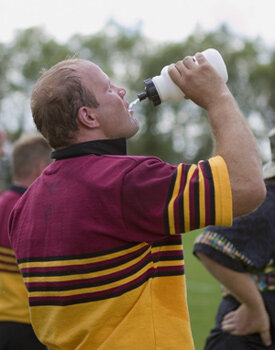Train Smart for Fall and Winter Sports
As usual, the summer has flown by and we’re now in the midst of the fall sports season and looking forward to the winter sports season. That means for many, pre-season training and conditioning. How you prepare for an athletic season can more than just affect your performance on the field, court or course. It can save you from injury, and sometimes it can even save your life.
The Importance of Gradual Pre-Season Conditioning
A common source of injury among athletes can be attributed to their starting a rigorous physical program, without first building up the necessary conditioning to support that effort. While each sport, and each athlete is different, the practice of gradually applying drills and workouts, designed to increase strength, flexibility and endurance are more or less the same. General guidelines suggest that athletes should not increase weight, training activity, mileage or pace by more than 10 percent per week. This “10 percent rule” not only helps prepare an athlete’s body for the rigors of the regular season, it also helps avoid losses in performance due to overtraining, and a resulting decrease in aerobic capacity. In addition to this, experts recommend that coaches prioritize development of an athlete’s core strength early in his or her pre-season conditioning, as that core strength later helps control and stabilize the athlete’s limbs. The ideal pre-season conditioning period is six to eight weeks. The minimum period should be no less than two weeks.
Acclimatization Saves Lives
Every year, there seems to be a news story about a young athlete who suddenly died during practice from a heat-related illness. According to the NCAA, 21 deaths have occurred in college football since 2000 – 55 percent of which took place on the first or second day of a new practice period. These sorts of tragedies have led coaches and trainers to adopt new heat-acclimatization programs that gradually increase athletes’ exposure to the duration physical activity and the intensity of that activity within a hot summer environment. These programs generally begin with a physical exam performed by a physician, followed by a heat-acclimatization period that takes place prior to the regular season. Furthermore, experts encourage coaches to conduct strenuous practices during the cooler part of the day, or in a shaded area, whenever possible.
Hydration
Hydration is another component athletes need to consider to both avoid heat-related illness and enhance performance. While guidelines may differ by athlete and by sport, in general, experts recommend that athletes consume a base amount of 10 – 12 cups of either water or an equivalent hydrating beverage daily. They further recommend that athletes consume 17 – 20 oz of fluid within the two hour period prior to play, and 7 – 10 oz of fluid every 10 minutes during play. They favor sports drinks with carbohydrates and electrolytes that replenish the athlete’s body with electrolytes and help restore energy levels, over plain water.
Rest for Optimal Performance
It sounds counterintuitive, but rest is a critical component for any strength training regimen. During exercise, an athlete’s muscles lose stores of energy called muscle glycogen. Muscle glycogen is what allows muscles to contract and move. Post-exercise recovery allows a body’s muscle glycogen store to replenish, and repair the tiny tears caused by muscle movement, ultimately making the muscle stronger than it previously was. Over time, this process makes the muscle stronger.
Keep it Up
Once the regular season begins, an athlete’s focus often shifts to building technical and tactical skills, and as a result, physical conditioning can actually decrease over the course of the season. In order to keep in top physical shape throughout the season, athletes should follow an in-season maintenance regimen that helps them maintain what they’ve built, and optimize their performance during games. This regimen, while not as intensive as their pre-season training, can be scheduled around games and other training.
Further Reading
For more information about any of these topics, consult the articles below:





